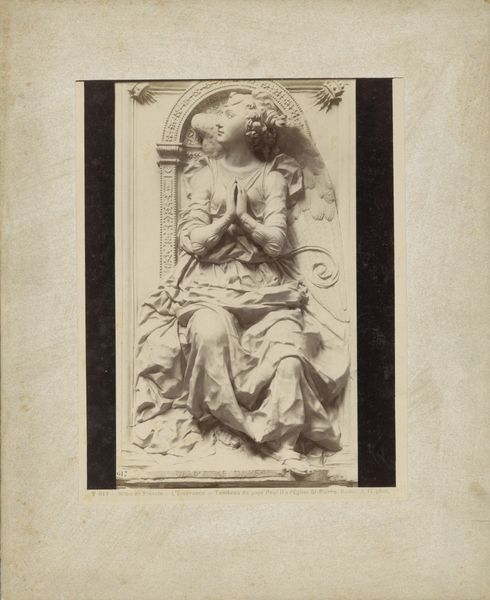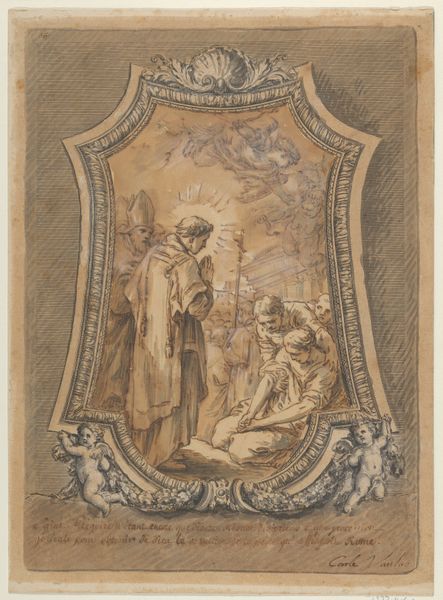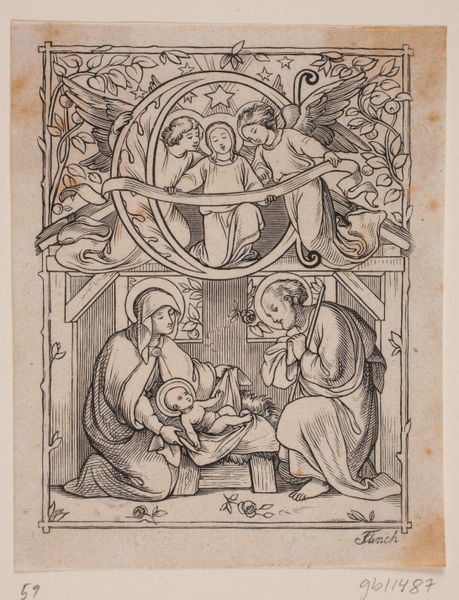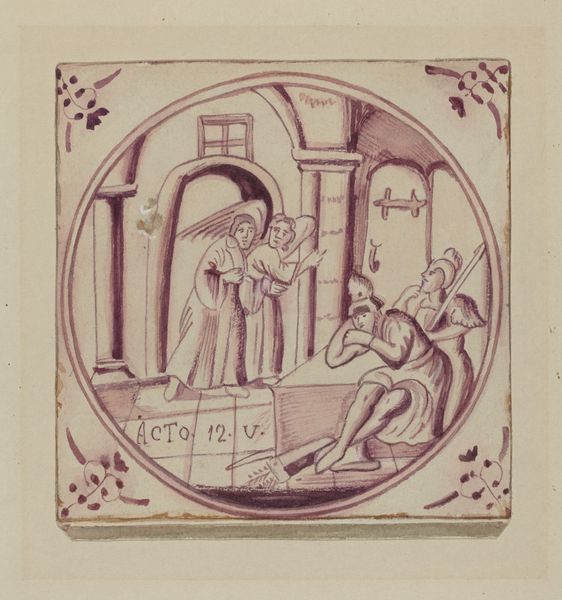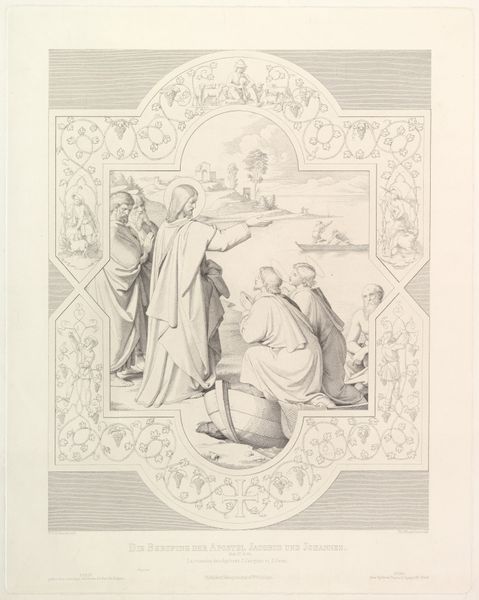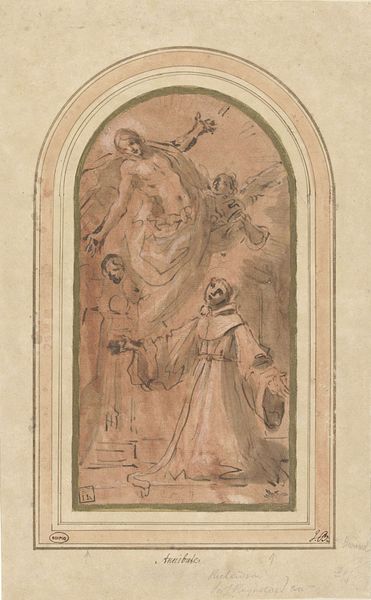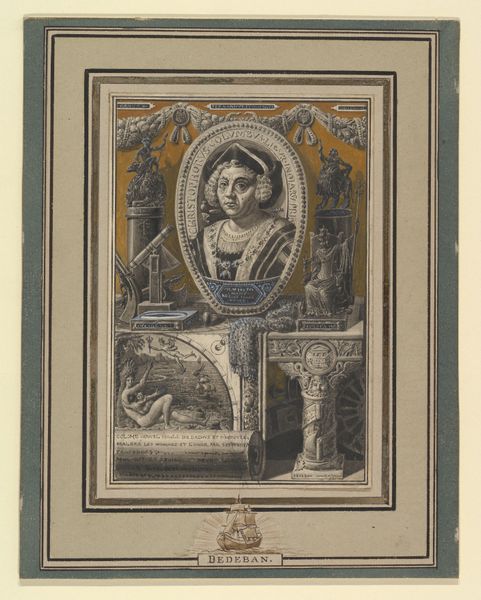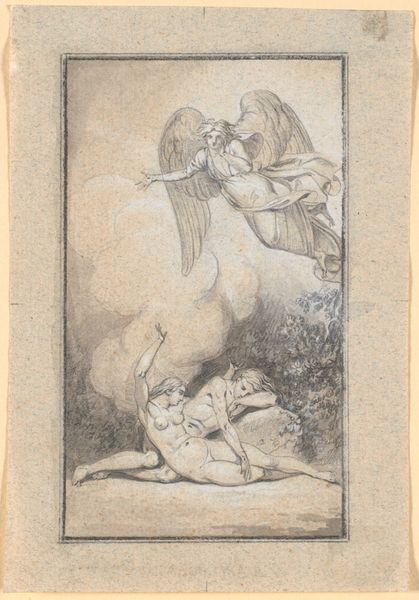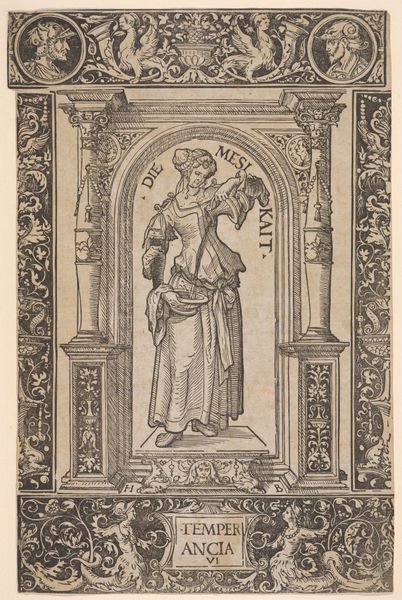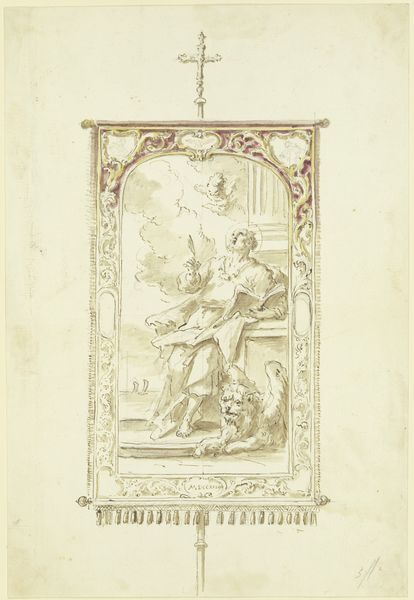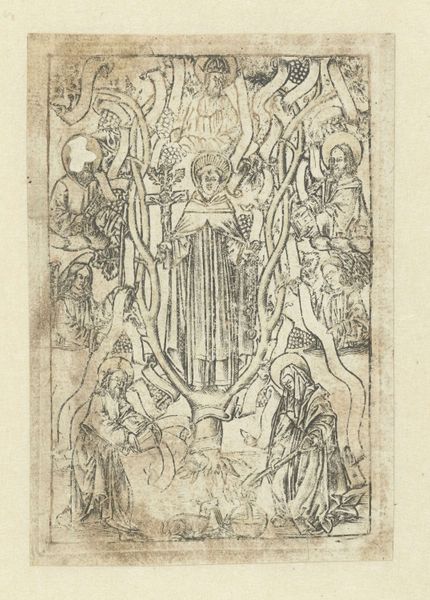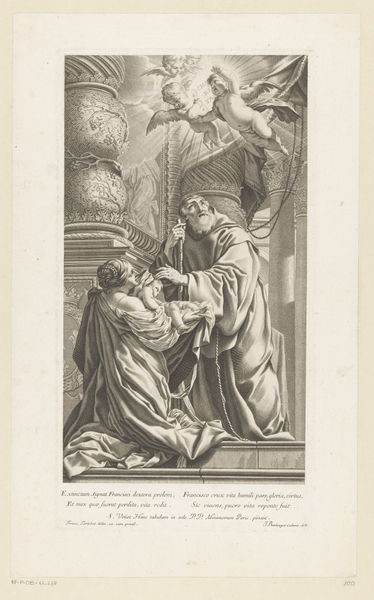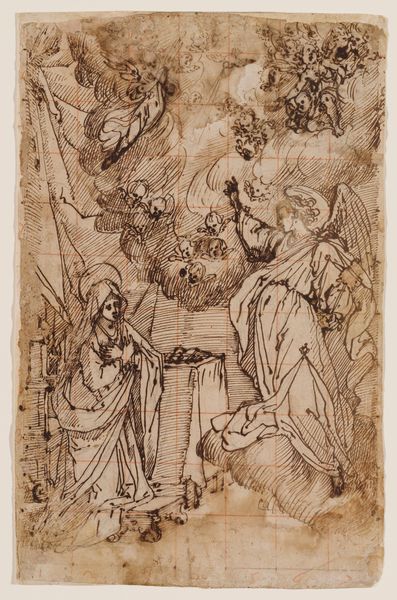
Initialer med fremstillinger af bedudelsen og Jesus fødsel 1813 - 1872
0:00
0:00
drawing, print, ink, woodcut, pen
#
drawing
#
ink drawing
#
medieval
#
narrative-art
# print
#
pen sketch
#
figuration
#
ink
#
woodcut
#
line
#
pen
Dimensions: 92 mm (height) x 85 mm (width) (bladmaal)
Curator: This delicate print, "Initialer med fremstillinger af bedudelsen og Jesus fødsel" or "Initials with depictions of the Annunciation and the Birth of Jesus", comes to us from the hand of Andreas Flinch, likely created between 1813 and 1872. Executed in ink, it appears to be a woodcut or perhaps a pen sketch designed to mimic that aesthetic. Editor: There's such a sense of quiet reverence here. The monochrome palette contributes, but the way the figures are rendered, almost weightless, gives the scene a dreamlike, sacred feeling. The ornate "D" that frames them only adds to that sense of importance. Curator: Indeed, the initial format firmly roots the artwork in a historical context; consider how illuminated manuscripts preserved not only texts but also disseminated powerful imagery within religious and courtly spheres. This was how information circulated for centuries! Flinch here invokes a specific historical association tied to those religious traditions. Editor: And observe the visual symbolism deployed. The dove, descending towards Mary, of course signifying the Holy Spirit. And even the flowers within the letter itself evoke purity and divinity, a consistent vocabulary found across eras and cultures to denote the sacred feminine. It's very deliberate, speaking directly to an understanding of well-worn imagery. Curator: Exactly. By the 19th century, such visual codes were accessible beyond the Church. Increased literacy and print media consumption meant these narratives had a broader audience, making their appearance within various visual and literary forms a shared cultural language. The very notion of the *copy* becoming essential to its power. Editor: I’m particularly drawn to how Mary’s gaze is directed downwards, the modesty implied by her posture contrasted with the forceful, active pose of the angel. It highlights her receptive role. Curator: A posture which directly engages centuries-long art historical interpretations, that sees it playing out from manuscript painting to monumental public sculptures. But it does prompt questions about representation and who controls visual narrative of even sacred subjects. Editor: It is all meticulously staged and crafted to create specific reactions in a public arena, from humility to reverence to maybe quiet introspection, just as we still seek in our own artworks today. Thanks for illuminating it all. Curator: And thank you for unpacking such complex, loaded and longstanding traditions so succinctly.
Comments
No comments
Be the first to comment and join the conversation on the ultimate creative platform.
